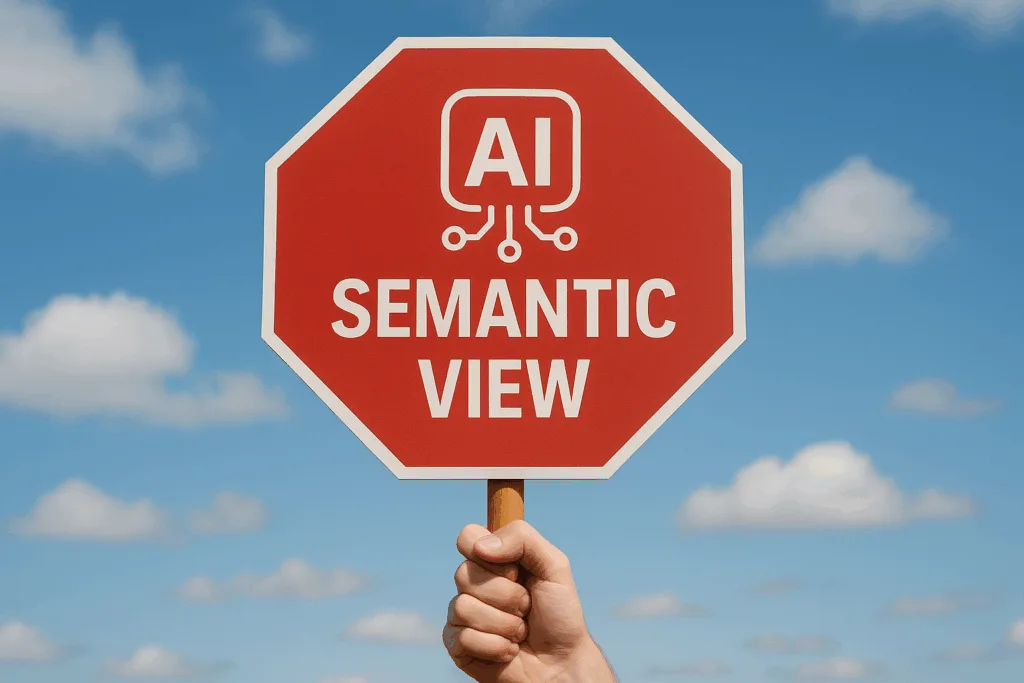I will never complain about having more metadata to improve visibility and understanding. Snowflake Semantic Views is an exciting development that our team jumped on to experiment with our client AI innovation labs. The whole purpose of building and governing semantics in your data warehouse and analytics platforms is to create meaning for the consumption of data.
Every enterprise approaches business analysis and requirements gathering for data engineering differently. At DataTools Pro, our entire business model centers on metrics governance and semantics. Our deep understanding of business drivers and outcomes is why we’re excited about the new Snowflake Semantic Views.
Unfortunately, we’ve also uncovered a major issue… It accelerates creation but could undermine long-term success and adoption of semantic views in Snowflake.
The problem: Using AI to automatically prepare and fill your semantic layer is a “use at your own risk” shortcut.

Why AI-Prepared Semantics Without Context Is Dangerous
If you don’t truly understand the meaning of the data in your Snowflake view, you shouldn’t rely on AI to generate the semantic model metadata.
AI tools like Snowflake Cortex can scan your data and infer semantics. This is dangerous because it creates a risk of distortion and misunderstanding for future users. The purpose of a semantic view is to apply clear, shared meaning to data, which helps with discovery, context, search, and analysis.
For example, imagine you run into a credit risk semantic view for business loan applications. Columns are labeled as:
- AVG Sales
- Monthly Gross Sales
- Avg Balance
- Annual Gross Sales
These are all distinct measurements with specific meanings and purposes to understand the financial stability of a client and the capacity for borrowing. Credit analysts rely on those differences for accurate analysis. If you let Cortex AI infer semantics and aliases here, you risk collapsing those distinctions, introducing confusion, and ultimately devaluing future AI tools that depend on your semantic view.
Lessons Learned Building Semantics and Metrics Glossaries at DataTools Pro
When we design a semantic view in Snowflake, we already have a metrics glossary for our clients taken directly from their loan origination system and credit-risk scorecard. We use AI less to infer meaning but rather to understand and infer disparity in existing semantics. Our learnings over the years is a key to a strong semantic model is not just labels. It’s the business definitions, descriptions, logical expressions, and taxonomy details that connect the dots for both business and AI consumers, along with a detailed plain English description without technology jargon.
This is why semantics must be curated by people who understand the business context. AI can help accelerate the process, but it cannot replace human interpretation of meaning
When we load and analyze data with Snowflake Semantic views using Snowflake MCP, we also load DataTools Pro metric glossary at the same time with Zapier.

Our Recommendations: Getting Started with Snowflake Semantic Views
- Begin with a narrow, well-understood dataset.
Choose data that already supports reporting and analytics so you can validate and build trust in the model. - Use AI for drafts, not for decisions.
Let AI suggest aliases or descriptions, but then sit down with subject matter experts to review and fill in metadata manually. This highlights exactly how far off AI can be. - Expand where pain is high.
Add new semantic views for topics and problems that cause outsized pain for business users. Even if they seem lower in strategic priority. These quick wins build adoption and credibility.
Bottom Line on Snowflake Semantic Views
Snowflake Semantic Views should be built with trust and meaning top of mind… not speed. Using AI alone to populate your semantic metadata is a shortcut that risks undermining the very purpose of the Snowflake Semantic view. Start small, work smart, validate with real analytics, and lean on your experts to build something amazing! If you need help, feel free to set up a free consultation.

